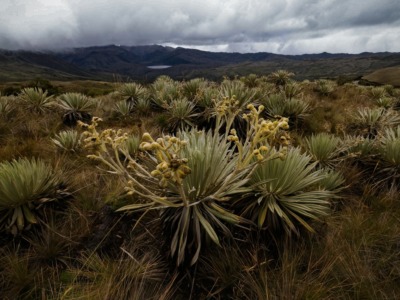The Black-billed Mountain Toucan (Andigena nigrirostris) is a colorful bird species found in the andean forests from Venezuela, Colombia, Ecuador to extreme northwest Peru. It feeds on fruits and insects and plays a crucial role in seed dispersal. Easy to identify with black cap, dark bill, white throat, powder blue belly, and mostly brownish upperparts. Occurs from 1,500-2,500m, typically below the elevational range of Gray-breasted Mountain-Toucan but occasionally some overlap. Uncommon; usually found singly or in pairs in the forest canopy, often around fruiting trees.

Gallery
Map

Chingaza National Natural Park
Parque Nacional Natural Chingaza in Colombia protects páramo ecosystems and serves as a water source for Bogotá. The park offers hiking trails through cloud forests and is home to species...Refugio EcoPalacio
Refugio Ecopalacio is located 52 km from the city of Bogota in the protective forest reserve of the Blanco and Negro rivers in the buffer zone of the Chingaza National...Reserva El Palmar
El Palmar natural reserve is located in the western mountain range of the Colombian Andes, two and a half hours from Bogotá. It offers simple, family-run rural lodging in a...
Río Blanco, Natural Reserve
Reserva Natural Río Blanco in Colombia is a cloud forest reserve celebrated for its bird diversity. It features well-marked trails where visitors can observe numerous bird species, including hummingbirds, tanagers,...